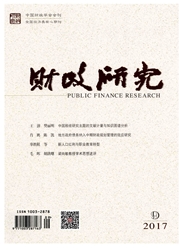

 中文摘要:
中文摘要:
自金融危机以来,我国整个国家债务不断扩张,其中非金融企业的债务情况最为严重。通过对非金融企业杠杆率的结构进行分析,结果表明国有企业的杠杆率过高是主要原因。另一方面,我国国有企业正处于国企改革,特别是混合所有制改革阶段,其目的是通过公有与非公有资本混合来提高国企资源有效配置与市场活力。理论分析认为国企与民营企业部门间存在着融资与效率差异,前者由于金融抑制、软预算约束导致并产生国企高杠杆率问题,后者由于产权制度导致国企低效率问题。金融危机以后,这种差异性在不断分化,使得目前的去杠杆与国企改革政策具有内在关联性,且其目的在于对部门间差异的修正。
 英文摘要:
英文摘要:
Since the financial crisis, the debt of our country has been expanding continuously, among which the debt situation of non-financial enterprises is the most serious. By analyzing the structure of the leverage ra- tio of non-financial enterprises, it shows that the leverage ratio of state-owned enterprises is the main reason. On the other hand, China's state-owned enterprises are in the state-owned enterprise reform, especially the mixed ownership reform stage, and its purpose is through public and non-public capital mix to improve the ef- fective allocation of state-owned enterprises and market vitality. Through the theoretical analysis, this paper argues that there are differences in financing and efficiency between state-owned enterprises and private en- terprises. The former is caused by financial restraint and soft budget constraints, which leads to the high lever- age ratio of state-owned enterprises, and the latter inefficiency due to property right system. Because this dif- ference is constantly differentiated after the financial crisis, the current leverage and state-owned enterprise reform policy is inherently related, whose purpose is to distinguish the differences among departments.
 同期刊论文项目
同期刊论文项目
 同项目期刊论文
同项目期刊论文
 期刊信息
期刊信息
